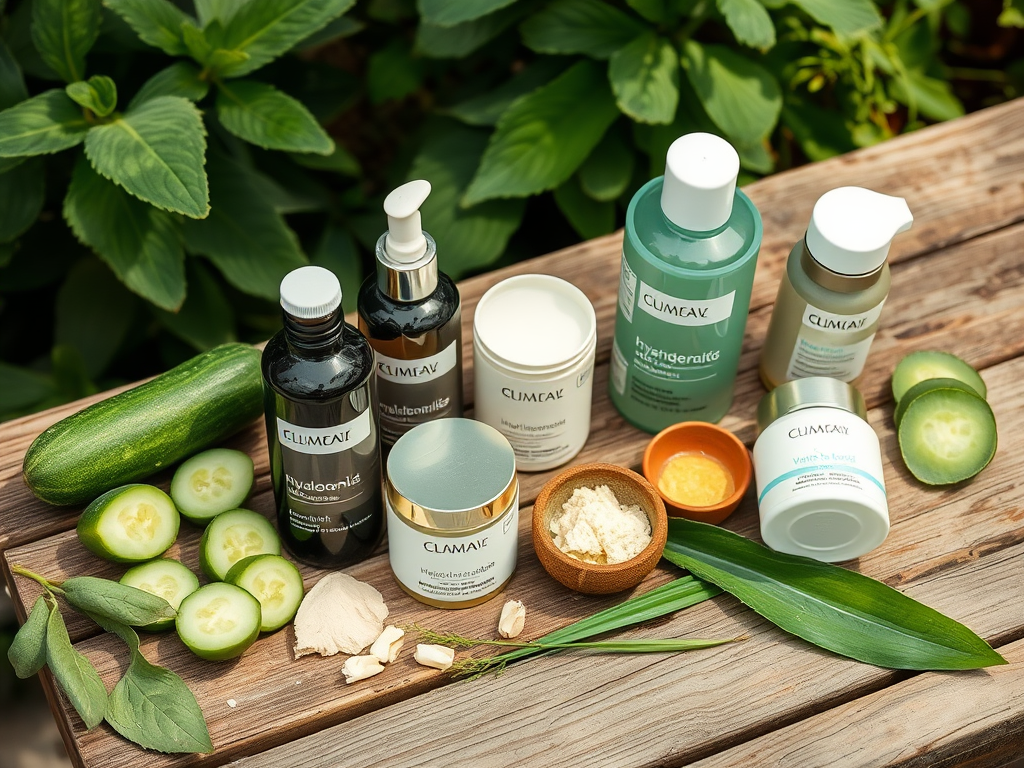When navigating the landscape of skincare products, two ingredients consistently become the talk of the town: hyaluronic acid and retinol. Like two superheroes of the skincare world, they each offer unique benefits that cater to different skin needs. The confusion often arises when trying to determine which one is the right fit for your specific concerns. By diving deeper into the science behind these ingredients, we can unravel their distinct properties and understand how they can either work alone or in tandem to elevate your skincare regime. While some individuals may side with one over the other, the reality is that understanding both can lead to more informed and effective choices for healthier, glowing skin.
Whether you’re grappling with dry patches or fine lines, understanding the distinct roles of hyaluronic acid and retinol can pave the way for a more harmonious skincare routine that addresses your unique skin challenges. Are you ready to explore the pros and cons of each? Let’s dive into the specifics, and along the way, discover how to make these ingredients work for you.
What is Hyaluronic Acid?

Essentially, hyaluronic acid is a naturally occurring substance in the body, primarily found in connective tissues, skin, and cartilage. With the remarkable ability to retain moisture—holding up to 1,000 times its weight in water—it plays a pivotal role in keeping our skin hydrated and plump. As we age, our skin’s natural levels of hyaluronic acid begin to diminish, contributing to dryness and loss of elasticity. This is why hyaluronic acid has become a key ingredient in many skincare products targeting hydration.
Incorporating hyaluronic acid into your daily routine can significantly improve overall skin texture and provide lasting moisture. It acts almost like a sponge, drawing water from the environment into the skin’s surface. Moreover, its lightweight formula ensures that it penetrates easily, making it suitable for virtually any skin type. Whether you are oily, dry, or somewhere in between, you’ll likely find that adding hyaluronic acid to your regimen can give your skin the boost it craves.
- Deep hydration for all skin types, preventing moisture loss.
- Improved skin plumpness, leading to a more youthful appearance.
- Soothing properties that help reduce irritation and redness.
What is Retinol?

Retinol is a derivative of vitamin A known for its transformative power in the skincare world. This powerhouse ingredient is famous for its ability to enhance cell turnover, essentially encouraging the body to shed old skin cells and replace them with fresh ones. This process not only helps diminish the appearance of fine lines and wrinkles but also improves skin texture and radiance. As retinol works to stimulate collagen production, it addresses some of the most common signs of aging, making it a favorite among those looking to revitalize their complexion.
Additionally, retinol is often utilized in the treatment of acne due to its ability to unclog pores and prevent breakouts. Many people are surprised to find that retinol can be effective for varying skin types, although it may require an acclimatization period, especially for sensitive skin. Understanding the right dosage and frequency of application is crucial for achieving the best results, as overuse can lead to irritation or dryness.
- Reduction of fine lines and wrinkles, promoting a more youthful look.
- Improvement in skin texture and tone, resulting in a smoother feel.
- Effective targeting of acne and clogged pores, leading to clearer skin.
How Hyaluronic Acid and Retinol Work Together
While both hyaluronic acid and retinol have standalone benefits, they can also work harmoniously when layered correctly. Adding hyaluronic acid after applying retinol can help mitigate any dryness or irritation that may arise. Understanding how to combine these two ingredients effectively can amplify their positive effects. For optimal results, users can apply retinol in the evening and follow up with hyaluronic acid or a hydrating moisturizer to restore moisture levels.
| Skin Concern | Recommended Ingredient |
|---|---|
| Dryness | Hyaluronic Acid |
| Signs of Aging | Retinol |
| Acne Breakouts | Retinol |
| Dehydrated Skin | Hyaluronic Acid |
Potential Side Effects
It’s essential to understand the potential side effects associated with each ingredient. While hyaluronic acid is generally safe for all skin types, some individuals may experience an allergic reaction, manifesting as redness or a rash. Conversely, retinol can lead to varying responses, particularly among those with sensitive skin. Common side effects include dryness, flakiness, and irritation, especially during the initial phase of usage. This is why it’s recommended to start slow, gradually incorporating retinol into your routine.
Both ingredients require thoughtful consideration based on your skin’s needs. It’s advisable to do a patch test first, especially with retinol, to gauge your skin’s tolerance. Understanding these factors is vital in making informed choices for your skincare routine, ensuring you get the most out of what these powerful ingredients have to offer.
Recommendations for Choosing Between Hyaluronic Acid and Retinol
When deciding between hyaluronic acid and retinol, consider your specific skin type and the concerns you wish to address. If your primary focus is combating dryness and achieving hydration, hyaluronic acid is your ally. For those looking to reduce signs of aging and improve skin texture and tone, retinol is the ingredient to reach for.
However, it’s worth mentioning that for many, a combination of both ingredients may yield the most promising results. Here are some factors to consider:
- Skin Type: Oily skin may benefit from retinol, while dry skin requires the moisture provided by hyaluronic acid.
- Desired Outcomes: Choose based on whether your priority is hydration or anti-aging.
- Routine: Consider how often you can commit to applying retinol and if you can incorporate hyaluronic acid afterward for balance.
Conclusion
In summary, both hyaluronic acid and retinol offer unique advantages that can greatly benefit your skin. Hyaluronic acid excels at providing deep hydration, making it essential for anyone suffering from dryness or seeking to plump up their skin. On the other hand, retinol emerges as a powerful tool for tackling signs of aging and improving skin texture, an essential part of many skincare routines. Making informed choices based on your skin’s specific needs can lead to a better understanding of how to utilize these ingredients effectively. Always remember to consult skincare professionals if you’re uncertain about the best approach for your unique skin concerns.
Frequently Asked Questions
- What skin types benefit most from hyaluronic acid?
Hyaluronic acid is suitable for all skin types, especially dry and dehydrated skin. - Can you use hyaluronic acid and retinol together?
Yes, they can be used together. It’s often recommended to apply hyaluronic acid after retinol to mitigate potential dryness. - How often should I use retinol?
Start with once or twice a week and gradually increase frequency based on skin tolerance. - Is hyaluronic acid safe for sensitive skin?
Yes, hyaluronic acid is generally well-tolerated and safe for sensitive skin. - What age should I start using retinol?
It’s often recommended to start using retinol in your mid-20s to early 30s, depending on individual skin concerns.
